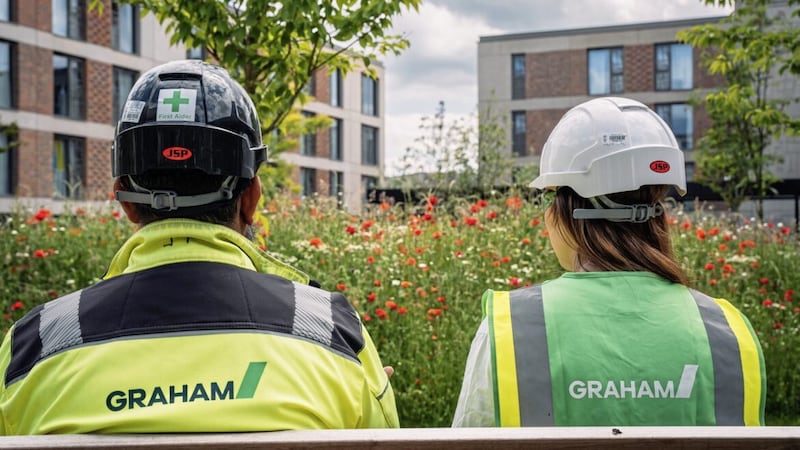TRANSPORT technology scale-up VivaCity, which is transforming cities into smarter and more efficient places to live and work, is expanding into Northern Ireland and the Republic in a bid to transform transport infrastructure across the regions.
Irish towns and cities are on a mission to boost road safety and promote active travel. To achieve this, they are turning to VivaCity, which currently works with more than 100 local authorities across the UK.
The VivaCity sensors gather highly accurate, anonymous, multimodal road use data on traffic flow, travel patterns and behaviours.
In addition to traffic monitoring, VivaCity’s product offering in Ireland includes Near Miss and Smart Signal Control technology for proactive road safety management and network optimisation.
The official launch comes after VivaCity’s recent project with Infrastructure Northern Ireland, which marks the first smart signal control project in the market and will help to prevent future incidents by making crossings safer for vulnerable road users.
This is something which is particularly prevalent with Stormont’s Department for Infrastructure, which reported a 10% increase in road fatalities compared to 2021.
Similarly, in the Republic, Dublin saw road deaths rising by 13% in 2022 compared to 2021, with a 100% increase in the number of pedestrians killed.
The need for more holistic road safety data has been raised in the Irish Times, with Dublin City Council having a large commitment to active travel.
VivaCity’s near-miss technology will enable local authorities in the region to identify incidents that could have happened but didn’t, and the root cause of dangerous interactions.
Combined with speed, tracks and the full smart traffic monitoring suite, this dataset will allow strategic planning and implementation of life-saving schemes and initiatives.
Mark Nicholson, chief executive and co-founder at VivaCity, said: “We’re excited to collaborate with Irish authorities and contribute towards solving some of their biggest transport challenges.
“Ireland shows a strong appetite for sustainable road safety, which is supported with a large active travel fund ready for authorities to ultise.
“With a clear gap in accurate data insights available to support decision making on the future of Ireland’s roads, we’re looking forward to seeing the positive impact that our technology will have.”
More than 200 people have died on roads across the island of Ireland already this year, official figures from both sides of the border have shown.
In Northern Ireland, PSNI figures recorded 49 deaths by October 10 after motorcyclist Ciaran Hurl (26) died after a crash with a lorry in Toomebridge.
This also meant that 18 more people had died on the north's roads than the same time last year, with 28 by August 16 in 2022 and 27 by the same date in 2021.
In the Republic, the levels had reached 145 by August following the death of four young people, including two siblings, in Co Tipperary.
Indeed Ireland's Road Safety Authority had already warned that the 2023 figures for January to July were the highest for six years, projecting there could be 168 deaths in the Republic by the end of this year.
VivaCity’s artificial intelligence (AI) sensors gather accurate, detailed and anonymous data 24/7 on transport modes, traffic flow and travel patterns, supporting strategic decisions to help optimise the transport network and improve urban infrastructure.
Cities need to harness technology that provides comprehensive, high-quality insights, especially when it comes to roads and public spaces.
When investing in projects to support sustainable travel, road safety and liveable neighbourhoods, this data is invaluable, enabling more efficient planning, impact monitoring and assessment of a scheme's success.








